Legg-Calvé-Perthes disease (LCPD) is a pediatric hip condition characterized by interruption of the blood supply to the femoral head, leading to osteonecrosis. This condition primarily affects children between 4 and 8 years but can occur between 2 and 15 years. Various treatments, including both surgical and nonsurgical options, have been explored to manage LCPD. Despite the generally benign prognosis for most children, up to 50% may experience hip symptoms in adulthood. Early intervention is crucial, with treatment strategies aimed at maintaining femoral head containment within the acetabulum. Children under 6 generally have a favorable prognosis with nonsurgical or less invasive interventions, while those older than 8 may benefit from advanced surgical procedures. Dynamic arthrography can assist in assessing femoral head containment and guiding treatment decisions.
For managing Legg-Calvé-Perthes disease (LCPD), it’s advised to consult with an orthopedist. Treatment goals focus on:
- Reducing hip irritation
- Restoring and maintaining optimal hip range of motion (ROM)
- Preventing collapse of the femoral head
- Ensuring the femoral head heals into a spherical shape
Surgical Treatment Options are:
- Arthrodiastasis: A technique using external fixation to distract the hip joint, aimed at improving joint mobility and femoral head containment. It has shown promising results but is associated with higher morbidity compared to other methods.
- Salter Osteotomy: Introduced in 1962, this technique redirects the acetabulum to improve femoral head coverage. It is indicated for children over 6 years with significant femoral head involvement and subluxation. Combined with femoral varus osteotomy, it has been effective in cases of larger and deformed femoral heads.
- Femoral Varus Osteotomy: This technique centers the femoral head in the acetabulum and is suitable for early-stage fragmentation. It is often preferred in Europe and has shown good long-term outcomes.
- Chiari Osteotomy: Used for severe cases with insufficient femoral head coverage. It involves medialization of the hip to improve congruency and reduce joint loading.
- Triple Innominate Osteotomy: Suitable for severe cases where Salter or femoral varus osteotomy alone is insufficient. It offers better femoral head containment but may cause pincer impingement if over-corrected.
- Other Options: Lateral shelf acetabuloplasty and transtrochanteric rotational osteotomy are considered for cases where standard methods are inadequate. Total hip arthroplasty is reserved for severe complications or advanced osteoarthritis.
Latest development in the field is a multicenter study by the International Perthes Study Group (IPSG), consisting of approximately 50 pediatric orthopedic surgeons from various US and international centers, who are jointly conducting a study on Legg-Calvé-Perthes disease (LCPD) in a trial named NCT02040714. Texas Scottish Rite Hospital will lead the study, with participating sites obtaining IRB approval as required. Data collection will be managed using REDCap, a secure, browser-based research database. This study hopes to create a database of patients with Legg-Calvé-Perthes disease, documenting their presentation, treatment, and outcomes with current therapies. It aims to compare the effectiveness of different treatments across various age groups (1-6, 6-8, 8-11, >11) at two and five years, as well as at skeletal maturity. For each age group, two to three common treatment approaches used by pediatric orthopedic surgeons will be evaluated. Treatment choices are guided by physician expertise rather than being predetermined by the study.

Image Source: International Perthes study group and Participating Organizations from around the world, Global LCPD Market Analysis of Disease
The market for Legg-Calvé-Perthes disease is projected to expand significantly during the forecast period from 2021 to 2028. Data Bridge Market Research estimates a compound annual growth rate (CAGR) of 4% for this market. The growth is attributed to increasing awareness, advancements in treatment options, and rising incidence rates of the disease.
Dr. Malini Gupta, Ph.D.
Sources
- https://www.nature.com/articles/s41536-023-00322-2
- https://perthesdisease.org/
- https://www.databridgemarketresearch.com/reports/global-legg-calve-perthes-disease-market https://www.childrenshospital.org/clinical-trials/nct02040714
- Figure contains company logos obtained from their respective websites
Disclaimer
The editors take care to share authentic information. In case of any discrepancies please write to newsletter@medness.org
The sponsors do not have any influence on the nature or kind of the news/analysis reported in MedNess. The views and opinions expressed in this article are those of the authors and do not necessarily reflect the official policy or position of MedNess. Examples of analysis performed within this article are only examples. They should not be utilized in real-world analytic products as they are based only on very limited and dated open-source information. Assumptions made within the analysis are not reflective of the position of anyone volunteering or working for MedNess. This blog is strictly for news and information. It does not provide medical advice, diagnosis or treatment nor investment suggestions. This content is not intended to be a substitute for professional medical advice, diagnosis, or treatment. Always seek the advice of your physician or another qualified health provider with any questions you may have regarding a medical condition. Never disregard professional medical advice or delay in seeking it because of something you have read on this website.
MedNess is a part of STEMPeers® which is a 501(c)(3) organization registered in PA as PhD Career Support Group. The organization helps create a growing network of STEM scientists that is involved in peer-to-peer mentoring and support.



